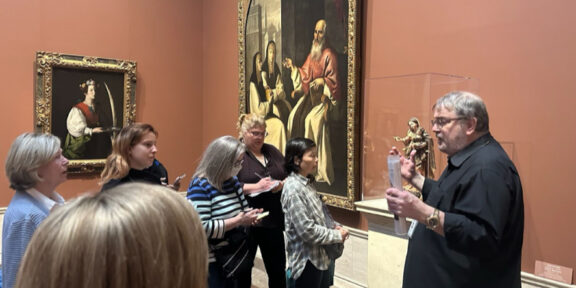“America I Am: The African American Imprint” brings the rich history of African Americans to the National Geographic Museum.
“This exhibit traces the indelible imprint that African Americans have made on America,” reads the initial wall that visitors see when they enter.
The silhouettes of Sojourner Truth, Richard Pryor, and Tupac Shakur, to name a few, glow in interchangeable colors of blues, yellows, and reds as “My People,” by Angie Stone, plays in the background.
“My people, hold your head up
My people, don’t get fed up
My people rise, my people fight
My people do alright”
The exhibit asks, “What if there were no…?” as photos of Wynton Marsalis, Michael Jackson, and Marcus Garvey align the walls.
Included is a quote by W.E.B. Du Bois where he asks, “Would America have been America without her Negro people?” The question is rhetorical and the answer evident.
“America I Am” takes visitors on a journey through the 18th century to now, describing the roles that African Americans played throughout society through the use of photos, original artifacts and objects. One 3-D platform, in particular, shows a clipping from the Chicago Defender that reads, ” Under ‘States’ Rights’ Posse, Bent on Lynching, Searches Woods for Prey” and “President Truman Wipes Out Segregation in Armed Forces.”
Encased items include the W.E.B. Du Bois’ Fisk University doctoral hood, the original copy of “The Rise of Negro” by Marcus Garvey in 1938, and a Mammy advertisement that reads, “A recipe… no other mammy cook could equal.”
Diverse sections of the exhibit provide the tale of slavery and the act of defiance. The journey begins in America, where people of African descent resided prior to colonies declaring their independence in 1776. “Before the Pilgrims…” there were Africans in America for nearly 300 years.
Another stop on the journey is the “Atlantic Slave Trade;” the exhibit showcases the door that was once a part of the Cape Coast Castle in 1653, a slave-trading fort on the coast of Ghana. The section also displays rusted coffle chains, which many slaves were forced to walk across states in. Coffle chains were placed around a slave’s neck, ankles, or wrists.
Among items is a replica of a “Big House.” A woman is dressed in a long-checkered skirt with a white head wrapping: traditional servant’s attire. The man is dressed in a hat and traditional male livery driver attire.
Other sections include the Jim Crow era, stereotypes used to sell merchandise, and the Civil Rights Movement.





